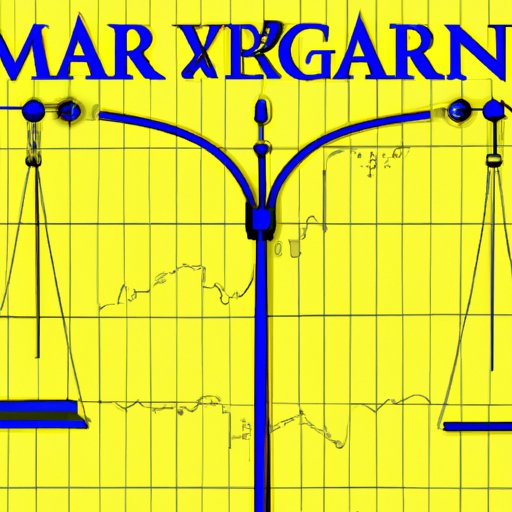Introduction
The Great Depression was a period of economic hardship for the United States and other countries around the world. It began with the stock market crash of 1929 and continued until 1939. The cause of the Great Depression has been widely debated, but one factor that contributed to the crisis was the practice of buying on margin. Buying on margin is the practice of using borrowed funds to purchase stocks or other securities. In this article, we will explore how buying on margin led to the Great Depression by examining the history of leveraged investing, its contribution to the 1929 stock market crash, the interconnectedness of global markets, the effects of margin calls on investors, and regulatory changes put in place after the crash.
Exploring the History of Buying on Margin and its Role in the Great Depression
Before delving into the role of buying on margin in the Great Depression, it is important to understand what it is and how it works. Buying on margin is the practice of using borrowed funds to purchase stocks or other securities. This type of leveraged investing can be beneficial if the stock price increases, as the investor can make a larger profit than they would have without borrowing money. However, it also carries more risk, as losses are amplified when the stock price declines.
During the 1920s, the stock market experienced a period of rapid growth, fueled in part by speculation and buying on margin. Investors could borrow money from brokers and use it to buy stocks, paying only a fraction of the total cost. As the stock prices rose, the demand for margin loans increased, and many investors were able to make large profits. Unfortunately, this was not sustainable, and when the stock market crashed in 1929, many investors who had bought on margin were wiped out.
The stock market crash of 1929 was triggered by a combination of factors, including overvalued stocks, excess speculation, and the interconnectedness of global markets. When the stock prices started to decline, margin calls became more frequent, forcing investors to sell their stocks in order to meet the loan requirements. This further exacerbated the decline in stock prices, leading to the Great Depression.

Examining the Role of Banks and Financial Institutions in Fueling the Crisis
In addition to the speculative investment practices that fueled the stock market crash, banks and financial institutions played a major role in the crisis. During the 1920s, banks had become increasingly involved in margin lending, offering loans to investors with only a small fraction of the stock’s value as collateral. As the stock market declined, banks began to issue margin calls, requiring investors to either pay back the loan or sell the stock. Many investors were unable to meet these demands, resulting in losses for both the banks and the investors.
The effects of margin calls on investors during the Great Depression were devastating. Many investors lost their life savings, while others were forced to declare bankruptcy. The economic downturn caused by the stock market crash had a ripple effect throughout the economy, leading to widespread unemployment, poverty, and despair.
Conclusion
The Great Depression was a period of economic hardship for the United States and other countries around the world. While there were many factors that contributed to the crisis, one of the most significant was the practice of buying on margin. Leveraged investing allowed investors to purchase stocks with borrowed money, and when the stock prices began to decline, margin calls issued by banks and financial institutions caused many investors to lose their life savings. The effects of the Great Depression were far-reaching, and it serves as a reminder of the importance of responsible investing.
In the wake of the Great Depression, new regulations were put in place to prevent future crises. These included restrictions on margin lending, as well as increased oversight of the banking system. Today, investors are still able to buy on margin, but the rules are much stricter, and the risks are better understood.
In conclusion, buying on margin played a significant role in the Great Depression. Although it may have been profitable for some investors in the short term, it also carried a high amount of risk and ultimately led to widespread economic devastation.
(Note: Is this article not meeting your expectations? Do you have knowledge or insights to share? Unlock new opportunities and expand your reach by joining our authors team. Click Registration to join us and share your expertise with our readers.)
